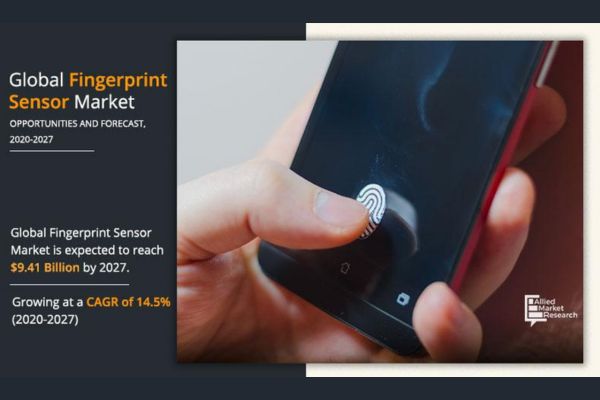Fingerprint sensors are transforming security, offering a reliable method of ensuring identity authenticity. These sensors have found widespread use in mobile devices, security systems and healthcare sectors. They provide a unique, non-invasive approach for personal identification, making them essential additives in the modern technology-driven world.
What are fingerprint sensors?
A fingerprint sensor is a biometric device that scans and identifies an individual’s fingerprint. It captures the distinct patterns of ridges and valleys on a person’s fingertip and transforms them into a digital template. This data is eventually matched against previously stored information to authenticate an individual’s identity. These sensors are classified into capacitive, optical and ultrasonic types; each of these types has different levels of security and functionality.
As per the market analysis, the global fingerprint sensor market is predicted to grow at a noteworthy CAGR of 14.5% throughout the forecast period. The growth of the sector is attributed to the increasing demand for secure authentication methods, especially in smartphones, laptops and other IoT devices. Growing concerns regarding data security privacy have further accelerated this growth.
Technological innovations in fingerprint sensors
The fingerprint sensor industry has undergone significant change over the past few years. Some of the latest technological innovations are the shift from traditional capacitive sensors to ultrasonic fingerprint sensors. These sensors use high-frequency sound waves to capture detailed 3D images of fingerprints, providing enhanced accuracy and security. Unlike capacitive sensors, ultrasonic fingerprint sensors can function through materials like glass and are less affected by moisture, ensuring greater reliability in diverse environments.
Another key innovation is the advent of under-display fingerprint sensors. This breakthrough permits the sensor to be insert below the screen of smartphones, thereby removing the need for a physical button. Prominent companies such as Vivo and Xiaomi have adopted this technology into their flagship models. This feature enhances the aesthetic appeal of devices and offers users a more seamless experience.
Integration of fingerprint sensors in security and payment systems
Fingerprint sensors are commonly utilized to enhance security in various systems. In many office buildings these sensors are integrated into access control systems. Unlike traditional keycards, which are misplaced or stolen, fingerprint sensors guarantee that only authorized individuals are able to enter. Since each person’s fingerprint is unique, this approach offers a higher level of security.
These sensors are most important in payment systems, particularly in mobile banking and digital wallets. Companies such as Apple and Samsung incorporate fingerprint sensors into their smartphones to secure transactions. For instance, Apple’s Touch ID and Samsung’s Fingerprint Recognition exhibit how these sensors defend financial transactions.
To make a payment, a finger is placed on the sensor. The device scans the fingerprint to verify its match with the saved data. If the scan is successful, the transaction is processed. This technique simplifies shopping and also safeguards financial information from unauthorized access. Fingerprint sensors, therefore, offer convenience and security in managing access and transactions.
Key developments in the fingerprint sensor industry
The global fingerprint sensor sector is highly competitive and constantly evolving. Leading companies are adopting innovative strategies such as forming partnerships, launching new products, merging with or acquiring other companies and creating joint ventures to strengthen their market position in various geographical regions and stay ahead of competitiveness. For example, in July 2024, Goodix and Samsung introduced innovative fingerprint enrollment techniques aimed at enhancing user convenience and security in their latest devices. Goodix, a leading biometric sensor manufacturer developed a feature called “sliding enrollment” for in-display fingerprint sensors, debuting it in the Iqoo Neo 9s Pro Plus.
On the other hand, in February 2023, IDloop introduced a contactless 3D fingerprint scanner with microscopic resolution. This technology enables fast comparison of fingerprints with existing databases created using contact-based scanners.
Conclusion
The fingerprint sensor industry is experiencing significant growth, fueled by the rising demand for secure authentication in devices and payment systems. In addition, advancements such as ultrasonic and under-display sensors offer better accuracy and convenience. Moreover, growing concerns over data security are creating new opportunities, ensuring strong growth in biometrics, IoT and financial security solutions.

















